More Cool Places to Explore on Google Earth

This is the second part of the list of the 25 coolest and most curious places to explore on Google Earth. The first part can be found here. Some of the features below were first discovered thanks to the watchful eye from orbit, and the curious eye of the Google Earth community visitors. There are undoubtedly more of them waiting to be noticed or explained, so why not spend an evening or two looking out for some unique formations?
Fresh Meteorite Crater
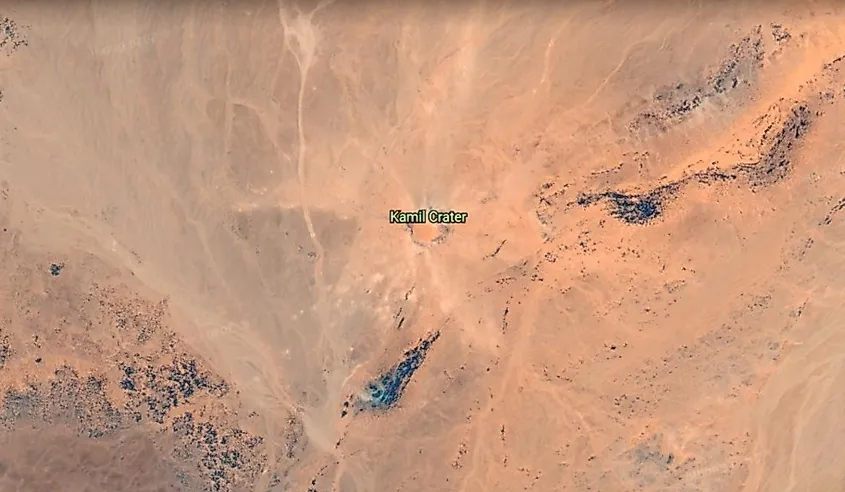
22.018333, 26.087500
Al Wahat Al Dakhla Desert, Egypt
The Kamil crater was first discovered via Google Earth. This pristine meteorite impact crater is located in a remote area of the Sahara desert in southwest Egypt. It is believed to be barely a few thousand years old: very young for any impact structure. During scientific expeditions, researchers found over 5,000 pieces of iron meteorite, and they estimate that the original meteorite was around 4.2 feet wide and weighed 2-4 thousand pounds, with the majority of its mass vaporized on impact. The rim of the crater is about nine feet high. The structure is surrounded by rays of the sediment blasted out of the crater on the impact. Rayed craters are common on Mars or Moon, where sparse atmospheres do not erode them as fast but are extremely rare on Earth. On Earth, such rays get covered or crumble very quickly.
Manmade Aurora
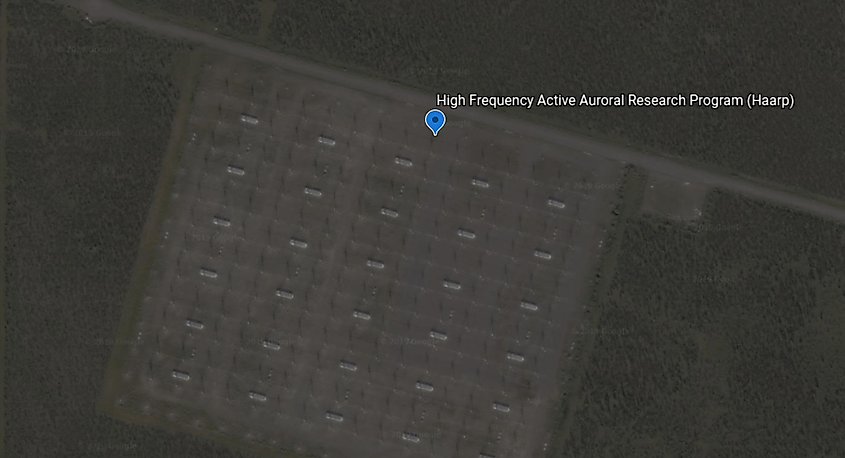
62.392832, -145.150312
Anchorage, Alaska, US
A massive military research facility called High Frequency Active Auroral Research Program (Haarp) with the fields of transmitters and receivers seen on the satellite images rivals Area 51. The Air Force's program manager says that Haarp's antennas are being used to study the ionosphere by artificially supercharging the atmosphere. Haarp scientists described the process as beaming radio waves into the crevasses of nearby Mt. Wrangell and bouncing signals off of the Moon. As a cool side-effect, the charged ionosphere produces the visual effect of Northern Lights: here in Haapr, they are produced artificially. The Aurora delivered on-demand!
Heart of Voh (Coeur de Voh)

-20.937631, 164.658489
New Caledonia
The Heart of Voh is probably the most romantic mangrove swamp in the world. This swamp has developed some unusual natural designs, and the most intriguing of them is a perfect heart shape, La Cœur de Voh. The heart can be seen from a plane, satellite, or a viewing point on the Mt Kathépaïk. In the center of Voh, there is a small museum of the history and ecology of this area. Colonized in the 19th century, it used to be a critical coffee-growing hotspot in the early 20th century. Nowadays, farming and aquaculture are the primary sources of livelihood for the locals: they catch up to 100 tonnes of mangrove crabs every year.
Aksai Chin Terrain Scale Model

38.265891, 105.949208
Huangyangtan, China
One of the intriguing discoveries satellite imaging helped us to make is located in the middle of a desolate area about 21 miles southwest of Yinchuan in the autonomous region of Ningxia in China. Near the town of Huangyangtan, there is a 1:500 scale terrain model: a mind-blowingly precise and detailed replica of the eastern Aksai Chin and adjacent Tibet, a disputed border region with India. That piece of land led the countries into war in 1962 and still remains in dispute. The 3000 ft × 2200 ft model is surrounded by the substantial facility, with rows of red-roofed buildings, multiple olive-colored trucks and a large compound with the lookout and communications towers. Such terrain models have been known to be used in military training, planning, and simulation: this type of rugged and challenging terrain can impact the tactical planning a lot, and it would be unwise to conduct the experiments in the remote mountains (not even mentioning risking a provocation). So Chinese strategists chose to bring the mountains to them. "Militaries love terrain models," comments a security specialist, "The Japanese had one before Pearl Harbor ... and the Chinese have full-scale airfields, oriented like Taiwanese airfields."
Grand Prismatic Spring

44.525049, -110.83819
Yellowstone National Park, Wyoming, USA
The Yellowstone's Grand Prismatic Spring is the largest hot spring in the US as well as the third-largest in the world. It is located in the Midway Geyser Basin between two more famous geysers, Madison and Old Faithful. Its main feature is the vibrant spectrum of colors: the range of hues similar to that created by the white light passing through a prism, red to blue.
Chernobyl Catastrophe Site
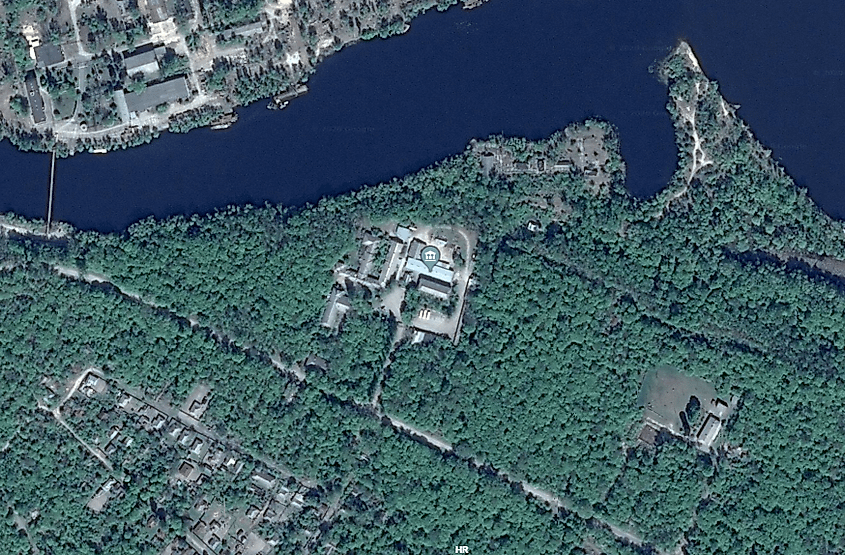
51.280673, 30.224031
Ukraine
The Chernobyl disaster is a nuclear accident that occurred on 26 April 1986 in the Chernobyl Nuclear Power Plant. The location is now a designated conservation area, with various monuments honoring the lives lost in 1986 and beyond. In the weeks and months following the Chernobyl disaster, hundreds of thousands of people known as "liquidators" were sent there in an effort to control the fire and core meltdown, and prevent radioactive material from spreading further. It is estimated that between 112,000 and 125,000 of them died by 2005, and thousands more were diagnosed with various cancers. Five million citizens of the former USSR suffered from the radiation effects following the disaster.
Large Shipwreck
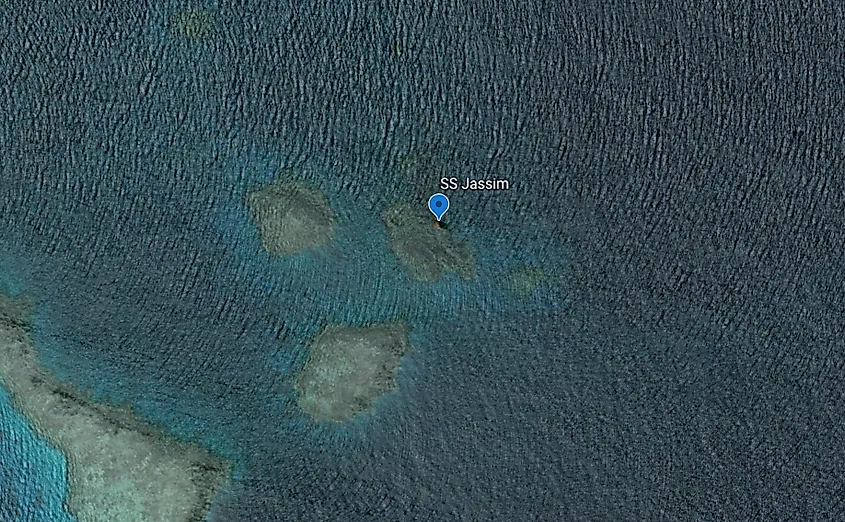
19.646111, 37.295000
Red Sea, Sudan
The SS Jassim, a Bolivian cargo ferry, ran aground and sank on the Wingate Reef off the coast of Sudan in 2003. At 265 feet long, it is now one of the most sizable shipwrecks still visible on Google Earth.
Mir Diamond Mine

62.529418, 113.990482
Siberia, Russia
Called the Mir Mine, the open-pit diamond mine was built in 1957 after Soviet scientists discovered a massive kimberlite tube in its land. The mine remained operational until 2004. The diamond pit is almost 2000 ft deep and has a diameter of 4000 feet. These high-quality diamonds are not an easy treat: the mine is located just 280 miles away from the Arctic Circle. The temperature can drop to 122°F in winter, and the nearest town is over 150 miles away. These harsh weather conditions mean that the permafrost reaches up to 450 feet deep, and even the surface ground is frozen solid for more than half the year, and the miners had to deal with health hazards and freezing of equipment.
Vredefort Crater

-26.989691, 27.500303
South Africa
Also known as the Vredefort Dome for its central feature, the Vredefort crater has an estimated radius of 118 miles, making it the oldest and largest known impact structure in the world. A meteorite or asteroid bigger than South Africa's Table Mountain blasted out this giant crater 2.02 billion years ago. The dome in the center was initially thought to had been formed by a volcanic explosion, but finding the telltale shatter cones in the bed of the nearby Vaal River revealed it was the locality of a colossal bolide impact. The Vredefort Dome is so large that it is home to four towns: Parys, Vredefort, Koppies, and Venterskroon. In 2005, this crater was declared a UNESCO World Heritage Site.
White Island and its Lonely Seals
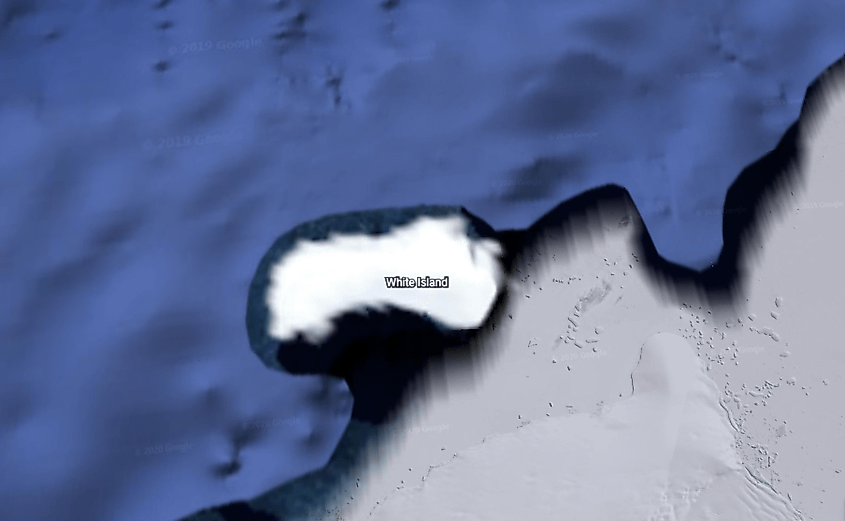
-66.733678, 48.651044
Antarctica
White Island is a part of the Ross Archipelago in Antarctica. Just ten on four miles in size, it is protruding through the ice about 3 miles east of Black Island. It has four craters, the highest of which is 701m. Apart from looking like a shiny white spot on Google Maps, a symbol of the unexplored and unmapped lands, the island is also unique for being "private grounds" of an isolated, but still breeding population of 25–30 Weddell seals. Not only is this population the most southern known, but it has also been physically isolated from other populations for over 60 years: the advance of the ice shields cut them off from the open ocean. The seals swim and feed in the open waters of McMurdo Sound, but their breathing capacity is too limited to parse under the 12 miles of permanent shelf ice.
Mysterious Desert Patterns in China
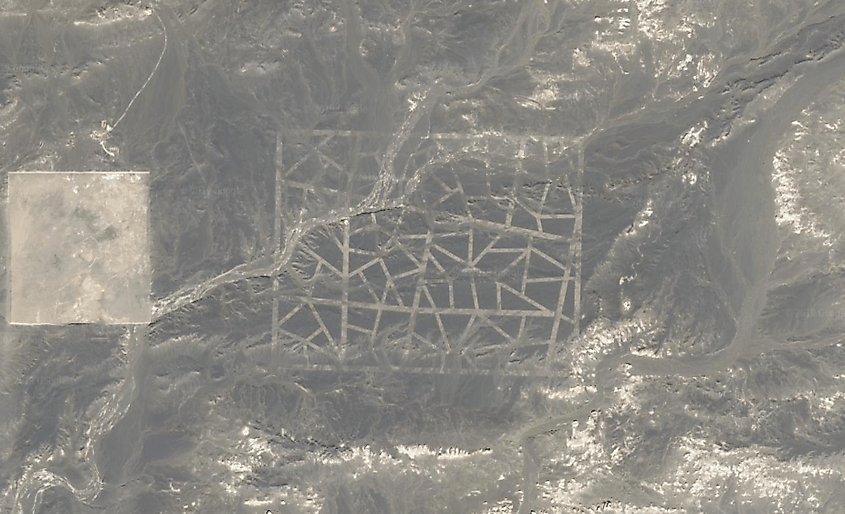
40.458148, 93.393145
China, Goby Desert
This area in China appears to be a source of a mystery similar to Area 51. First, there is a giant structure at the coordinates above: satellite photos pinpoint the coordinates at a location in Dunhuang, Jiuquan, Gansu, near the Gobi Desert. The site, which covers a mile of land, appears to be in close proximity to the headquarters of China's space program, too (although, to be fair, most governments utilize remote desert areas to conduct various tests and not-for-public-eyes developments). There appears to be some aircraft located there, which can suggest that the structure is some kind of a training, testing, or gunnery practice facility.
When we were checking out the map to write this article, we also found a few more mysterious locations we can not explain: 40.491008, 93.510794; then 40.491135, 93.468661; another one at 44.711336, 93.529494; and 40.494974, 93.470584. Copy the coordinates and paste them into the Google Maps or Google Earth search line: what do you think those odd structures and shapes might be?











